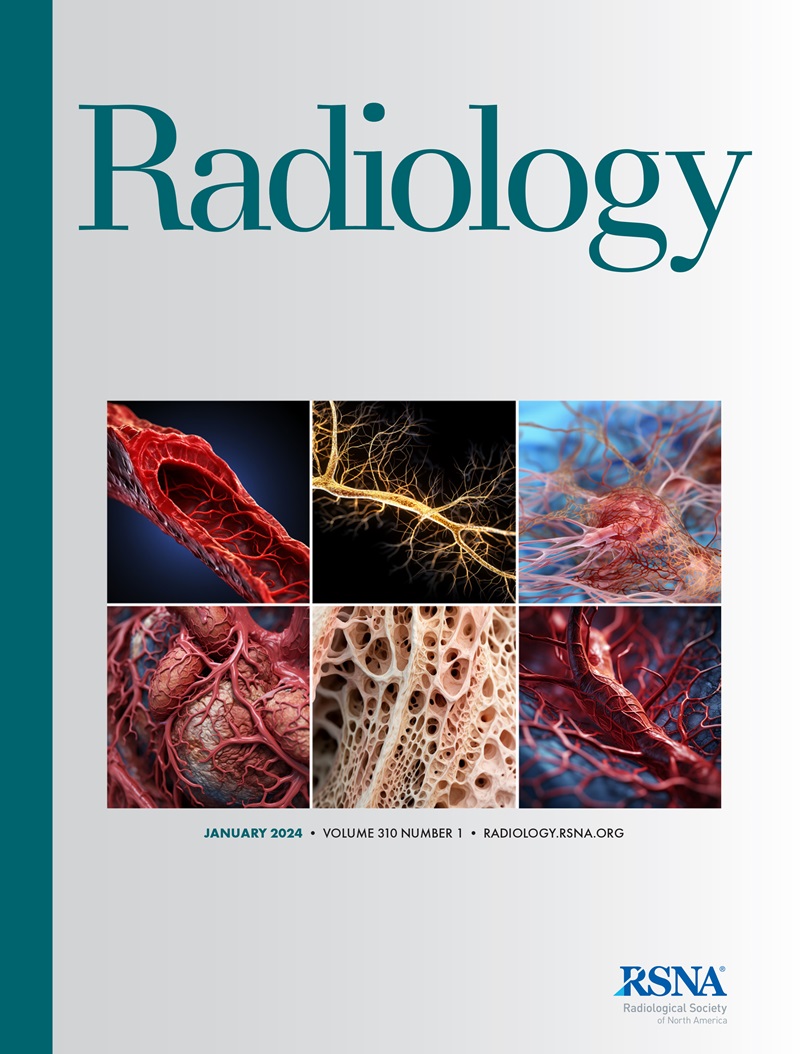Nikolaj Bøgh, Malene Aastrup, Janne K Mortensen, Hanne Gottrup, Jakob U Blicher, Per Borghammer, Mattias H Kristensen, Esben S S Hansen, Michael Vaeggemose, Christoffer Laustsen
求助PDF
{"title":"阿尔茨海默病氘代谢显像与FDG PET的比较。","authors":"Nikolaj Bøgh, Malene Aastrup, Janne K Mortensen, Hanne Gottrup, Jakob U Blicher, Per Borghammer, Mattias H Kristensen, Esben S S Hansen, Michael Vaeggemose, Christoffer Laustsen","doi":"10.1148/radiol.241808","DOIUrl":null,"url":null,"abstract":"<p><p>Background The approval of amyloid-targeting therapies has made it increasingly important to differentiate Alzheimer disease (AD) from other causes of dementia. Dysfunctional glucose metabolism is a recognized pathophysiological element in AD that may be visualized with spectroscopic MRI of deuterated glucose and its metabolites, also known as deuterium metabolic imaging (DMI). Purpose To explore the potential of DMI as a diagnostic tool for AD. Materials and Methods In this prospective cross-sectional study, participants with newly diagnosed AD and age-matched controls were recruited from April to October 2023. DMI was performed with a 3-T system equipped with a proton/deuterium head coil following oral consumption of 75 g of deuterated glucose. Clinical fluorodeoxyglucose (FDG) PET data were acquired from patient records for comparison. The predefined primary outcome, the ratio between lactate and glutamine plus glutamate (Glx) at DMI, was analyzed using age-corrected linear mixed-effect models. Results Ten participants with AD (mean age, 72 years ± 6 [SD]; six women) and five age-matched healthy controls (mean age, 68 years ± 7; four men) were included. The primary analysis revealed no evidence of a difference in the ratio of lactate to Glx between participants with AD and controls (<i>P</i> = .24 across all regions of interest). Exploratory analyses revealed that participants with AD had reduced signals for medial temporal lactate (0.7 ± 0.2 vs 0.5 ± 0.1, <i>P</i> = .04) and Glx (0.5 ± 0.03 vs 0.48 ± 0.05, <i>P</i> = .03) compared with controls. Finally, a strong correlation (<i>r</i> = 0.73) was observed between DMI and FDG PET. Conclusion This study did not find evidence to support a shift from oxidative to anaerobic metabolism in AD. Exploratory analyses revealed a decrease in glucose metabolism in the medial temporal lobe. In extension hereof, a similar distribution of low DMI metabolism and decreased FDG PET glucose uptake was observed. © RSNA, 2025 <i>Supplemental material is available for this article.</i> See also the article by Liu et al in this issue. See also the editorial by Port in this issue.</p>","PeriodicalId":20896,"journal":{"name":"Radiology","volume":"315 1","pages":"e241808"},"PeriodicalIF":12.1000,"publicationDate":"2025-04-01","publicationTypes":"Journal Article","fieldsOfStudy":null,"isOpenAccess":false,"openAccessPdf":"","citationCount":"0","resultStr":"{\"title\":\"Comparison of Deuterium Metabolic Imaging with FDG PET in Alzheimer Disease.\",\"authors\":\"Nikolaj Bøgh, Malene Aastrup, Janne K Mortensen, Hanne Gottrup, Jakob U Blicher, Per Borghammer, Mattias H Kristensen, Esben S S Hansen, Michael Vaeggemose, Christoffer Laustsen\",\"doi\":\"10.1148/radiol.241808\",\"DOIUrl\":null,\"url\":null,\"abstract\":\"<p><p>Background The approval of amyloid-targeting therapies has made it increasingly important to differentiate Alzheimer disease (AD) from other causes of dementia. Dysfunctional glucose metabolism is a recognized pathophysiological element in AD that may be visualized with spectroscopic MRI of deuterated glucose and its metabolites, also known as deuterium metabolic imaging (DMI). Purpose To explore the potential of DMI as a diagnostic tool for AD. Materials and Methods In this prospective cross-sectional study, participants with newly diagnosed AD and age-matched controls were recruited from April to October 2023. DMI was performed with a 3-T system equipped with a proton/deuterium head coil following oral consumption of 75 g of deuterated glucose. Clinical fluorodeoxyglucose (FDG) PET data were acquired from patient records for comparison. The predefined primary outcome, the ratio between lactate and glutamine plus glutamate (Glx) at DMI, was analyzed using age-corrected linear mixed-effect models. Results Ten participants with AD (mean age, 72 years ± 6 [SD]; six women) and five age-matched healthy controls (mean age, 68 years ± 7; four men) were included. The primary analysis revealed no evidence of a difference in the ratio of lactate to Glx between participants with AD and controls (<i>P</i> = .24 across all regions of interest). Exploratory analyses revealed that participants with AD had reduced signals for medial temporal lactate (0.7 ± 0.2 vs 0.5 ± 0.1, <i>P</i> = .04) and Glx (0.5 ± 0.03 vs 0.48 ± 0.05, <i>P</i> = .03) compared with controls. Finally, a strong correlation (<i>r</i> = 0.73) was observed between DMI and FDG PET. Conclusion This study did not find evidence to support a shift from oxidative to anaerobic metabolism in AD. Exploratory analyses revealed a decrease in glucose metabolism in the medial temporal lobe. In extension hereof, a similar distribution of low DMI metabolism and decreased FDG PET glucose uptake was observed. © RSNA, 2025 <i>Supplemental material is available for this article.</i> See also the article by Liu et al in this issue. See also the editorial by Port in this issue.</p>\",\"PeriodicalId\":20896,\"journal\":{\"name\":\"Radiology\",\"volume\":\"315 1\",\"pages\":\"e241808\"},\"PeriodicalIF\":12.1000,\"publicationDate\":\"2025-04-01\",\"publicationTypes\":\"Journal Article\",\"fieldsOfStudy\":null,\"isOpenAccess\":false,\"openAccessPdf\":\"\",\"citationCount\":\"0\",\"resultStr\":null,\"platform\":\"Semanticscholar\",\"paperid\":null,\"PeriodicalName\":\"Radiology\",\"FirstCategoryId\":\"3\",\"ListUrlMain\":\"https://doi.org/10.1148/radiol.241808\",\"RegionNum\":1,\"RegionCategory\":\"医学\",\"ArticlePicture\":[],\"TitleCN\":null,\"AbstractTextCN\":null,\"PMCID\":null,\"EPubDate\":\"\",\"PubModel\":\"\",\"JCR\":\"Q1\",\"JCRName\":\"RADIOLOGY, NUCLEAR MEDICINE & MEDICAL IMAGING\",\"Score\":null,\"Total\":0}","platform":"Semanticscholar","paperid":null,"PeriodicalName":"Radiology","FirstCategoryId":"3","ListUrlMain":"https://doi.org/10.1148/radiol.241808","RegionNum":1,"RegionCategory":"医学","ArticlePicture":[],"TitleCN":null,"AbstractTextCN":null,"PMCID":null,"EPubDate":"","PubModel":"","JCR":"Q1","JCRName":"RADIOLOGY, NUCLEAR MEDICINE & MEDICAL IMAGING","Score":null,"Total":0}
引用次数: 0
引用
批量引用

 求助内容:
求助内容: 应助结果提醒方式:
应助结果提醒方式:


